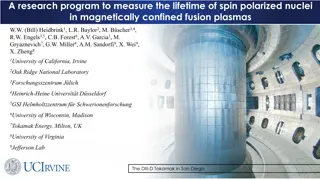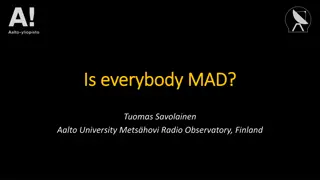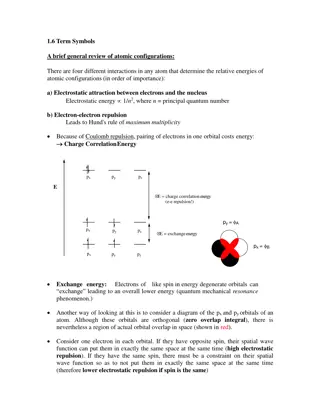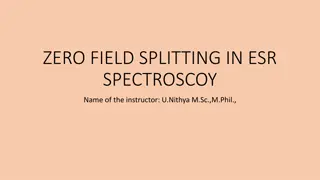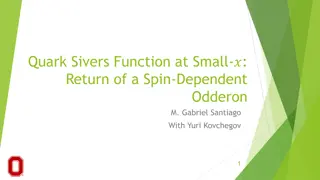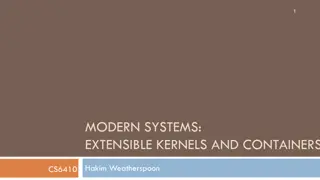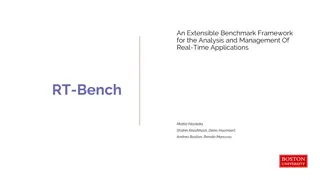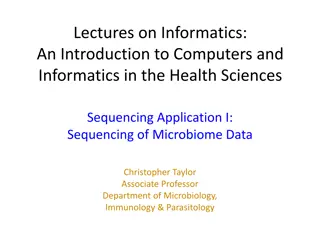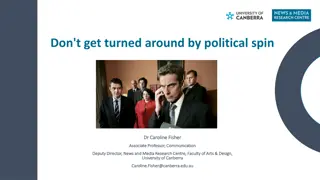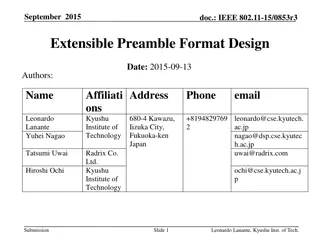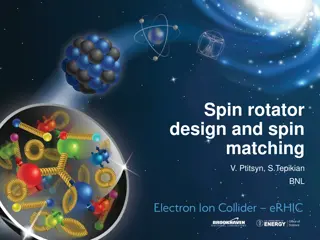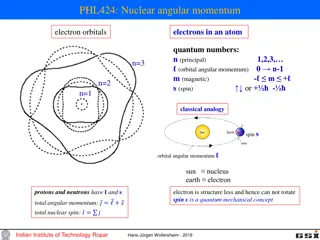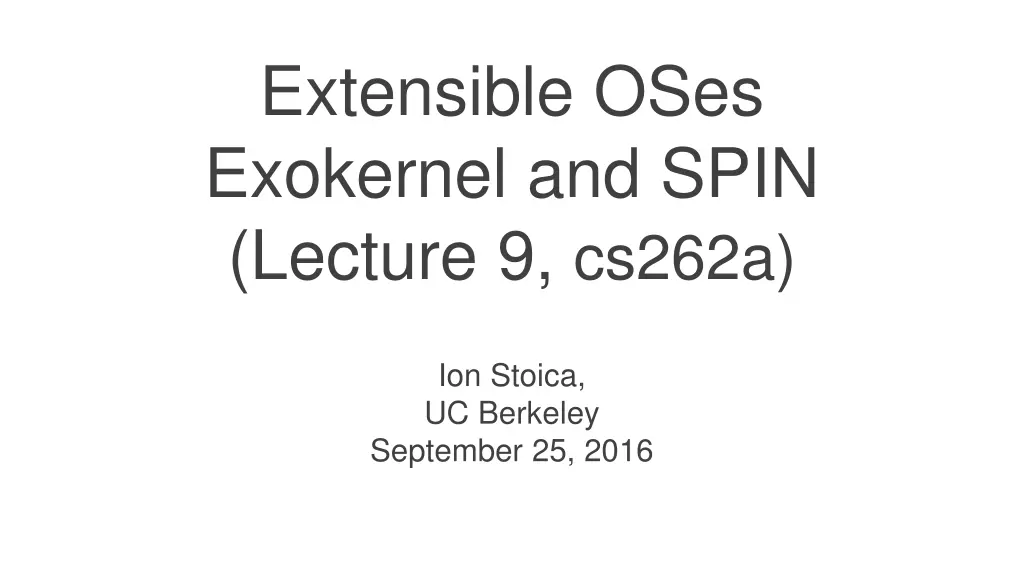
Extensible Operating Systems: Exokernel and SPIN Overview
Discover the innovative concepts of extensible operating systems through Exokernel and SPIN architectures discussed in the lecture by Ion Stoica at UC Berkeley. Explore the challenges and solutions offered by these advanced OS designs for improved extensibility, security, and performance.
Download Presentation

Please find below an Image/Link to download the presentation.
The content on the website is provided AS IS for your information and personal use only. It may not be sold, licensed, or shared on other websites without obtaining consent from the author. If you encounter any issues during the download, it is possible that the publisher has removed the file from their server.
You are allowed to download the files provided on this website for personal or commercial use, subject to the condition that they are used lawfully. All files are the property of their respective owners.
The content on the website is provided AS IS for your information and personal use only. It may not be sold, licensed, or shared on other websites without obtaining consent from the author.
E N D
Presentation Transcript
Extensible OSes Exokernel and SPIN (Lecture 9, cs262a) Ion Stoica, UC Berkeley September 25, 2016
Todays Papers Exokernel: An Operating System Architecture for Application-Level Resource Management , Dawson R. Engler, M. Frans Kaashoek, and James O Toole Jr. (https://pdos.csail.mit.edu/6.828/2008/readings/engler95exokernel.pdf ) SPIN: An Extensible Microkernel for Application-specific Operating System Services , Brian N. Bershad, Craig Chambers, Susan Eggers, Chris Maeda, Dylan McNamee, Przemys aw Pardyak, Stefan Savage, and Emin G un Sirer (www.cs.cornell.edu/people/egs/papers/spin-tr94-03-03.pdf)
Traditional OS services Management and Protection Provides a set of abstractions Processes, Threads, Virtual Memory, Files, IPC APIs, e.g.,: POSIX Resource Allocation and Management Protection and Security Concurrent execution 3
Context for These Papers (1990s) Windows was dominating the market Mac OS downward trend (few percents) Unix market highly fragmented (few percents) OS research limited impact Vast majority of OSes proprietary Is OS research dead? , popular panel topic at systems conferences of the era An effort to reboot the OS research, in particular, and OS architecture, in general
Challenges Extensibility Security Performance From Stefan Savage s SOSP 95 presentation Can we have all 3 in a single OS?
Challenge: Fixed Interfaces Both papers identify fixed interfaces provided by existing OSes as main challenge Fixed interfaces provide protection but hurt performance and functionality Exokernel: Fixed high-level abstractions hurt application performance because there is no single way to abstract physical resources or to implement an abstraction that is best for all applications. Fixed high-level abstractions limit the functionality of applications, because they are the only available interface between applications and hardware resources
Challenge: Fixed Interfaces Both papers identify fixed interfaces provided by existing OSes as main challenge Fixed interfaces provide protection but hurt performance and functionality SPIN: Existing operating systems provide fixed interfaces and implementations to system services and resources. This makes them inappropriate for applications whose resource demands and usage patterns are poorly matched by the services provided.
Problems in existing OSes Extensibility Abstractions overly general Apps cannot dictate management Implementations are fixed Performance Context switching expensive Generalizations and hiding information affect performance Protection and Management offered with loss in Extensibility and Performance
Symptoms Very few of innovations making into commercial OSes E.g., scheduler activations, efficient IPC, new virtual memory policies, Applications struggling to get better performances The knew better how to manage resources, and the OS was standing in the ways
Examples Illustrating the need for App Control Databases knows better than the OS what pages they will access Can prefetch pages, LRU hurts their performance Shared virtual memory systems know whether to use disk or remote memory Use a page fault to retrieve page from disk / another processor
Two Papers, Two Approaches Exokernel: Very minimalist kernel, most functionality implemented in user space Assumed many apps have widely different requirements SPIN: Securely download functionality (code) in the kernel Mostly focused on protecting standard OS against device drivers
Exokernel A nice illustration of the end-to-end argument: ``general-purpose implementations of abstractions force applications that do not need a given feature to pay substantial overhead costs. In fact the paper is explicitly invoking it (sec 2.2)! Corollary: Kernel just safely exposes resources to apps Apps implement everything else, e.g., interfaces/APIs, resource allocation pollcies
OS Component Layout Exokernel www.cs.cornell.edu/courses/CS6410/2011fa/lectures/08-extensible-kernels.pdf (Hakim Weatherspoon, Cornell University)
Exokernel Main Ideas Kernel: resource sharing, not policies Library Operating System: responsible for the abstractions IPC VM Scheduling Networking
Lib OS and the Exokernel Lib OS (untrusted) can implement traditional OS abstractions (compatibility) Efficient (LibOS in user space) Apps link with LibOS of their choice Kernel allows LibOS to manage resources, protects LibOSes
Exokernel design Securely expose hardware Decouple authorization from use of resources Authorization at bind time (i.e., granting access to resource) Only access checks when using resource E.g., LibOS loads TLB on TLB fault, and then uses it multiple times Expose allocation Allow LibOSes to request specific physical resources Not implicit allocation; LibOS should participate in every allocation decision
Exokernel design Expose names Remove one level of indirection and expose useful attributes E.g., index in direct mapped caches identify physical pages conflicting Additionally, expose bookkeeping data structures E.g., freelist, disk arm position (?), TLB entries Expose revocation Polite and then forcibly abort Repossession (still leaves some small # of pages to app)
Example: Memory Self-authenticated capability Guard TLB loads and DMA Secure binding: using self-authenticating capabilities For each page Exokernel creates a random value, check Exokernel records: {Page, Read/Write Rights, MAC(check, Rights)} When accessing page, owner need to present capability Page owner can change capabilities associated and deallocate it Large Software TLB (why?) TLB of that time small LibOS can manage a much bigger TLB in software LibOS handles page faults
Example: Processor Sharing Process time represented as linear vector of time slices Round robin allocation of slices Secure binding: allocate slices to LibOSes Simple, powerful technique: donate time slice to a particular process A LibOS can donate unused time slices to its process of choice If process takes excessive time, it is killed (revocation)
Example: Network Downloadable filters Application-specific Safe Handlers (ASHes) Preprocess packets, e.g., copy them in memory Can reply directly to traffic, e.g., can implement new transport protocols; dramatically reduce Secure biding happens at download time
SPIN Use of language features for Extensions Extensibility Dynamic linking and binding of extensions Safety Interfaces; type safety; extensions verified by compiler Performance Extensions not interpreted; run in kernel space
SPIN structure From Stefan Savage s SOSP 95 presentation
SPIN Main Ideas Extend the kernel at runtime through statically-checked extensions System and extensions written in Modula-3 Event/handler abstraction
Language: Modula 3 Designed by DEC and Olivetti (1980s) Descendent from Mesa Modern language (at that time) Interfaces Type safety E.g., Array bounds checking, storage management, GC Threads Exceptions Died together with DEC (acquire by Compaq in 1998)
SPIN design Co-location Same memory-space as kernel Enforces modularity Local protection domains Resolves at link time Dynamic call binding Event handler pattern
Events and Handler Event: a message that announces a change in the state of the system or a request for service (Event) Handler: a procedure that receives the message An extension installs a handler on an event by explicitly registering the handler with the event through a central Essentially a callback mechanism
Example: Memory The kernel controls allocation of physical and virtual addresses capabilities Extensions: Event: page fault App provides handle for page faults
Example: Processor Sharing Based on Modula-3 threads Scheduler multiplexes processor among competing strands A strand is similar to a thread in traditional operating but no kernel state Use preemptive round-robin to schedule strands Events: Block (e.g., wait for IO) and Unblock (e.g., interrupt) Handlers: need to be provided by thread package Checkpoint and Resume
Example: Network Stack www.cs.cornell.edu/courses/CS6410/2011fa/lectures/08-extensible-kernels.pdf (Hakim Weatherspoon, Cornell University)
SPIN vs Exokernel SPIN uses programming language facilities and communicates through procedure calls Uses hardware specific calls to protect without further specification
Summary Extensibility without loss of security or performance Exokernels Safely export machine resources Decouple protection from management SPIN Kernel extensions (imported) safely specialize OS services Safety thorugh Programming Language support

